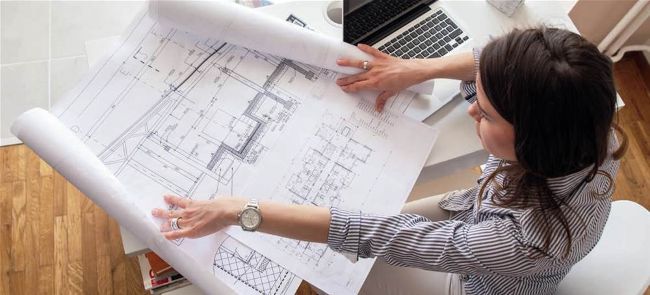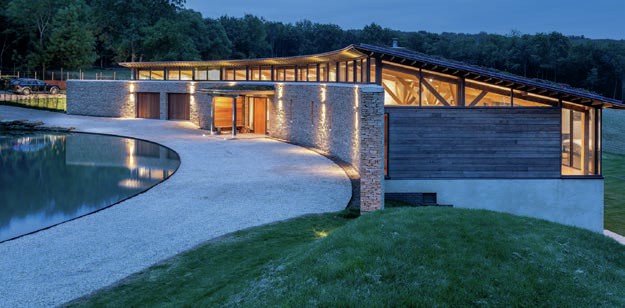CHOOSING A HOUSE DESIGNER
From engaging a chartered professional to DIY design, Anamika Talwaria investigates different ways to develop the plans for your dream home

CHARTERED ARCHITECT

Informed by the countryside setting and sloping site, this bold house by Batterham Smith Architects features a curved design and upside-down living so the owners can enjoy stunning rural views from all angles
George Batterham of Batterham Smith Architects explains why an accredited architect might be the right route
How does the design process work? You and the architect have an initial meeting to make sure we understand the scope of the project. This is when to check that your values align with the architect’s – for example, are you looking for a traditional or modern build? Are eco-friendly principles a high priority? Make sure you’re both on the same wavelength.
Then, we’ll put together a detailed brief, accounting for the size and scope of your project, the budget, timescales and the kind of quality you’re after. This can take a fair amount of time.
From there, we’ll use your wishlist and ideas to draw up the creative design for you to consider. We’ll discuss it before settling on the final scheme.
What are the benefits of appointing an architect? If you’re planning a particularly complex scheme or building on an interesting site, an architect can help you find creative solutions. For instance, if your property is in a conservation area, listed or has another restriction, we can help you realise solutions that you might not have thought of.
Likewise, if you’re building on a sloping plot or a tricky bit of land, it’s helpful to have a pro who can look holistically at the project. This maintains the integrity of the design from conception to completion.
Another designer might be very good from a technical standpoint, but you’ll be left to your own devices during the build, and therefore might not have the same level of control over the aesthetic.
How much involvement does the homeowner have? Designing your dream house is a two-way process.
Clients often bring ideas –a mood board or cuttings from magazines. We turn that into a home that fits the context.